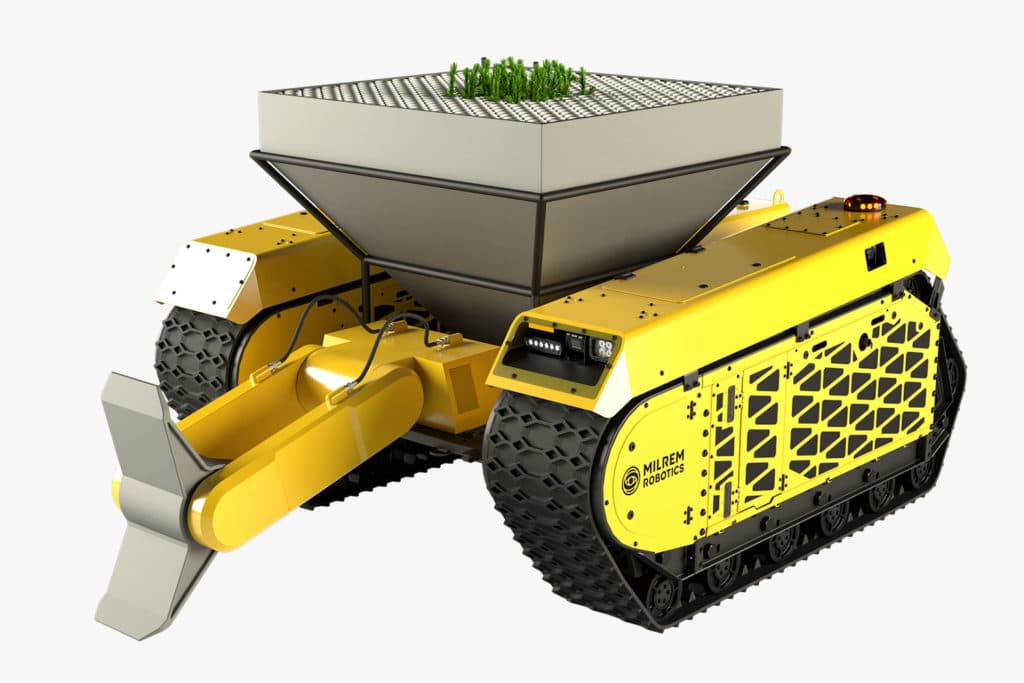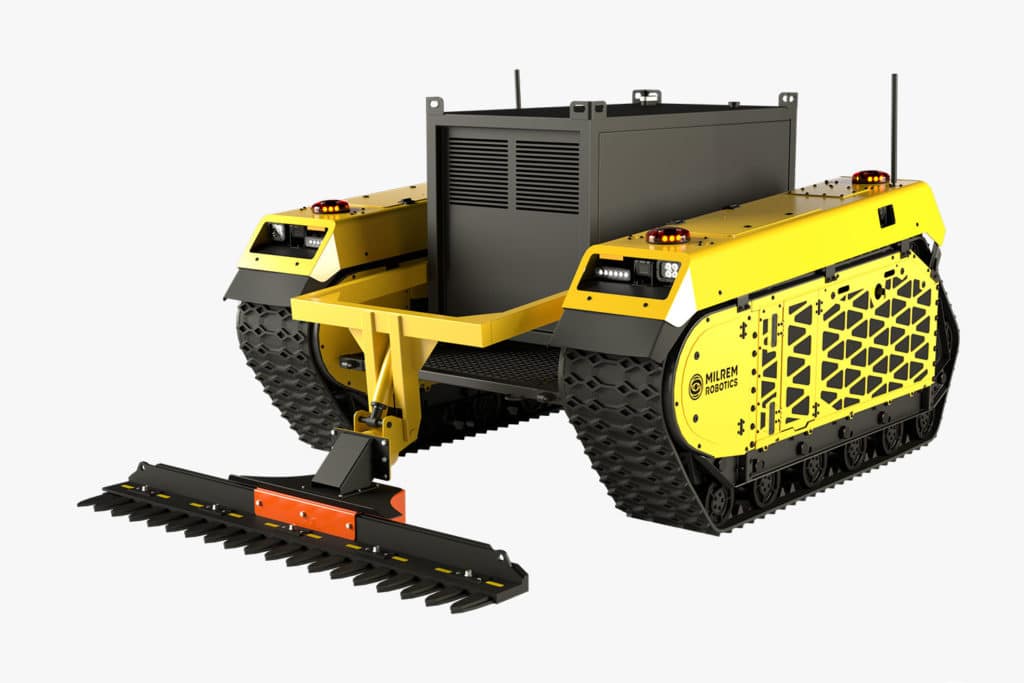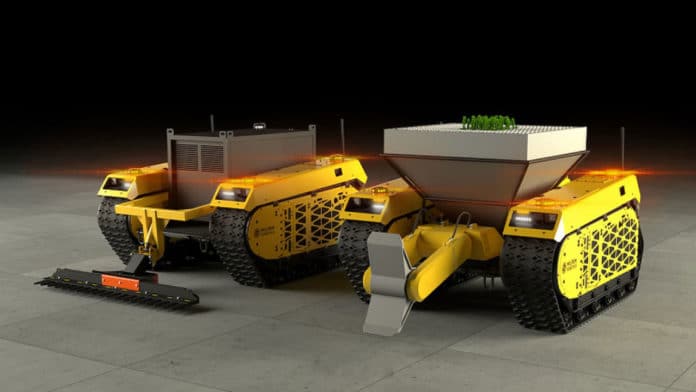The robot manufacturer Milrem Robotics and the University of Tartu in Estonia have collaborated to develop two types of autonomous robotic foresters that could plant thousands of trees a day. The robots are based on the company’s range of driverless ground vehicles.
One of the robots is a planter, called Multiscope Forester Planter, which is equipped with a modular planting payload with a capacity of 380 seedlings. Its planting speed is around 5-7 hours per hectare, depending on the tree species and the terrain. It also records the exact location of each tree.

The other of the two robotic foresters, the Robotic Forester Brushcutter, is equipped with a hydraulic power unit, brush cutting tool, and necessary sensors for tool movement and can remove the vegetation around seedlings. The robot was designed to be rugged and long-lasting in challenging environments like clear-cut areas. The same system can be used with other applications for electricity line maintenance, roadside maintenance, and so on.
The robotic foresters are the size of a small car and weigh around one ton. Both are 240 cm long, 200 cm wide, 115 cm high, and can reach the top speed of 20 km/h (12 mph).

Their navigation uses laser-based LiDAR, cameras, and global positioning systems, with LiDAR producing a three-dimensional geometric representation of the environment, while high-resolution camera images fill in the blanks. All data is merged in real-time, complementing each other and making it possible for forest robots to drive autonomously in a forest. The cameras are also used for image recognition and provide a visual display for the operator if he needs to steer the robot remotely.
“This is one of many interesting applications … which show that mobile robotics technology is maturing fast and enabling robots to tackle new types of tasks in difficult environments,” Andrew Davidson at the U.K.’s Imperial College London told New Scientist.
